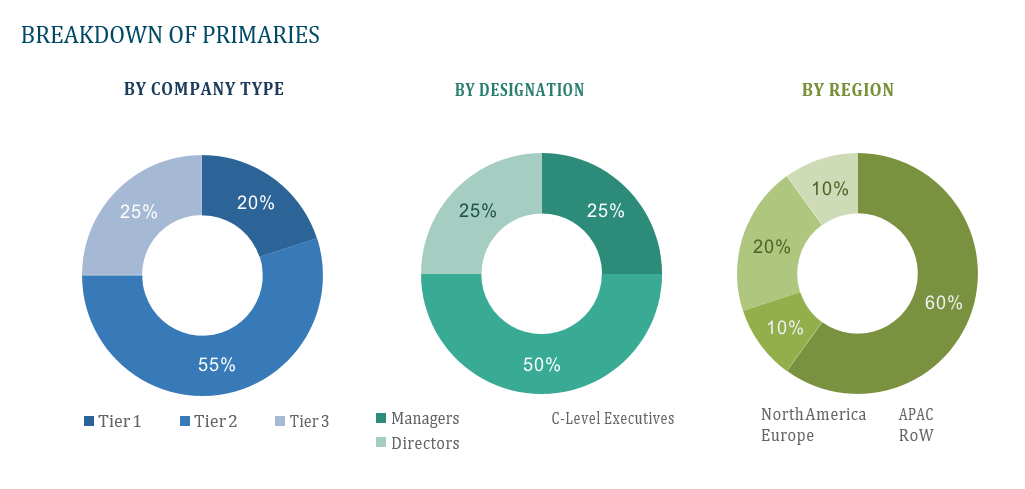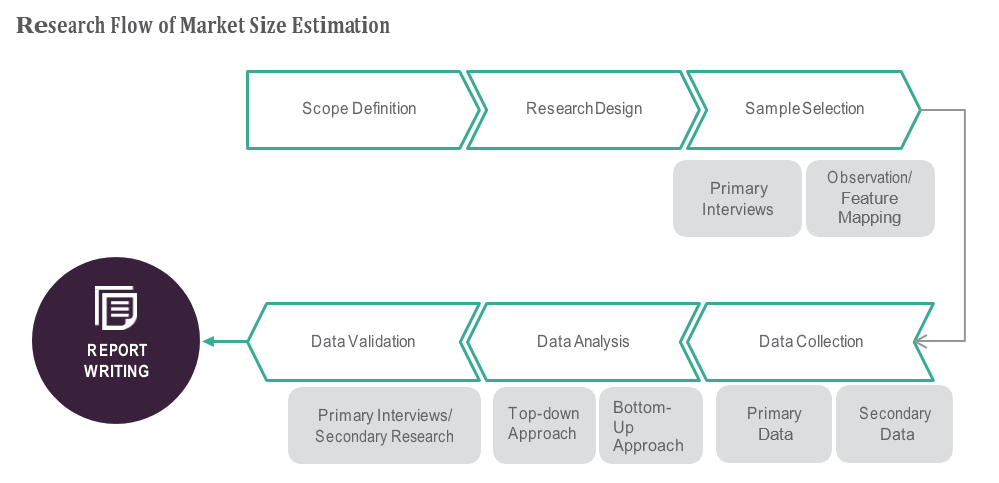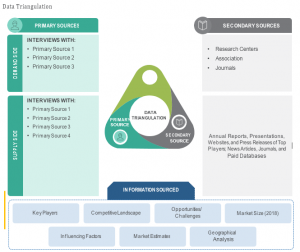OVERVIEW
The IoT Node and Gateway Market is projected to experience substantial growth with its market valuation anticipated to increase from USD 6.4 billion in 2024 to an estimated USD 13.2 billion by 2029, reflecting a compound annual growth rate (CAGR) of 15.7% during the forecast period. IoT nodes and gateways are critical components of the Internet of Things (IoT) ecosystem, enabling communication between IoT devices and the cloud or central server. IoT nodes are endpoint devices that collect data and perform specific functions, while gateways act as intermediaries that connect these nodes to the network, providing data aggregation, processing, and protocol translation.
The market’s expansion is driven by the increasing adoption of IoT technologies across various industries, advancements in wireless communication technologies, and the growing emphasis on real-time data processing and analytics. The rising implementation of IoT solutions in sectors such as manufacturing, healthcare, transportation, and smart cities further bolsters market growth. However, challenges such as high initial costs, security concerns, and the need for continuous technological updates to meet evolving industry standards must be addressed to sustain market momentum.
Geographically, the Asia Pacific region dominates the IoT node and gateway market due to its large population, rapid technological advancements, and significant investments in IoT infrastructure. North America and Europe also hold substantial market shares driven by technological advancements and strong demand for high-performance IoT solutions. However, the market faces challenges such as regulatory compliance, high production costs, and the need for ongoing innovation to enhance performance and reduce costs.
Market Dynamics
Drivers:
The growth of the IoT node and gateway market is primarily driven by the increasing adoption of IoT technologies across various industries. As businesses and organizations strive to enhance operational efficiency, reduce costs, and improve customer experiences, there is a growing need for connected devices and smart solutions that enable real-time data collection, monitoring, and control. IoT nodes and gateways play a crucial role in enabling these capabilities by providing the necessary infrastructure for IoT deployments. In the manufacturing industry, IoT nodes and gateways are used to monitor equipment performance, track inventory, and optimize production processes, leading to increased efficiency and reduced downtime. In the healthcare sector, these devices enable remote patient monitoring, asset tracking, and predictive maintenance of medical equipment, improving patient care and operational efficiency. This growing adoption of IoT technologies across various industries is a key driver of the IoT node and gateway market.
Advancements in wireless communication technologies are also significant drivers of market growth. Innovations in wireless communication protocols, such as 5G, Wi-Fi 6, and LPWAN (Low Power Wide Area Network), are enhancing the connectivity, speed, and reliability of IoT nodes and gateways. These advanced communication technologies provide higher data transfer rates, lower latency, and improved coverage, enabling seamless connectivity for IoT devices in diverse environments. The deployment of 5G networks, for example, offers ultra-fast and low-latency communication, supporting real-time data processing and analytics for IoT applications. The development of LPWAN technologies, such as LoRaWAN and NB-IoT, provides long-range and low-power communication, enabling cost-effective and efficient connectivity for IoT devices in remote and hard-to-reach areas. These technological advancements are driving the demand for high-performance IoT nodes and gateways in various applications.
The growing emphasis on real-time data processing and analytics is another key driver for the market. With the increasing volume of data generated by IoT devices, there is a strong focus on developing solutions that can process and analyze data in real time, enabling timely and informed decision-making. IoT gateways play a crucial role in this process by providing data aggregation, edge computing, and protocol translation capabilities, enabling real-time data processing at the edge of the network. In the transportation industry, for example, IoT gateways are used to collect and process data from sensors and connected vehicles, providing real-time traffic updates, route optimization, and predictive maintenance. In smart cities, these devices enable real-time monitoring and management of urban infrastructure, such as traffic lights, streetlights, and waste management systems, improving efficiency and sustainability. This growing focus on real-time data processing and analytics is further propelling the demand for IoT nodes and gateways.
Key Opportunities :
The IoT node and gateway market presents numerous opportunities for growth and innovation, particularly in the development of advanced communication technologies and integrated IoT solutions. The increasing focus on smart city initiatives and the need to create sustainable and efficient urban environments are driving research and development efforts towards innovative IoT solutions. The development and commercialization of high-performance communication protocols, advanced edge computing technologies, and seamless integration with cloud platforms present significant growth opportunities. These advanced technologies offer improved connectivity, real-time capabilities, and enhanced security, making them attractive options for various IoT applications.
The expansion of the IoT node and gateway market into emerging economies offers significant growth potential. Rapid urbanization, industrialization, and increasing investments in IoT infrastructure in countries such as China, India, Brazil, and South Africa are driving the demand for advanced IoT solutions in various sectors. The rising consumer awareness of smart technologies and the preference for efficient and connected solutions in these regions are also contributing to the growth of the market. Manufacturers have the opportunity to tap into these growing markets by offering cost-effective, high-performance IoT node and gateway solutions that meet the specific needs and regulatory requirements of emerging economies.
The increasing focus on digitalization and advanced manufacturing techniques offers promising prospects for the IoT node and gateway market. The adoption of advanced manufacturing technologies such as precision engineering, real-time monitoring, and automation is driving the demand for IoT nodes and gateways with precise application properties and enhanced performance characteristics. The development of smart IoT nodes and gateways with sensors and connectivity features is also enabling real-time monitoring and optimization of IoT deployments. The integration of digital technologies in IoT node and gateway manufacturing and application processes is expected to enhance production efficiency, reduce waste, and improve product quality, further driving market growth.
Restraints :
High initial costs are a significant restraint for the market. The deployment of advanced IoT node and gateway solutions involves significant capital investment in hardware, software, and technology. The high initial investment required for installing and configuring IoT nodes and gateways can be a barrier for small and medium-sized enterprises (SMEs) and new market entrants. Manufacturers must develop cost-effective solutions and provide flexible financing options to make advanced IoT technologies more accessible to a wider range of customers.
Security concerns related to the connectivity and data transmission of IoT devices also present challenges for the market. The increasing reliance on connected devices and real-time data for IoT applications raises concerns about the security and integrity of data transmitted between IoT nodes and gateways. Public and regulatory scrutiny on data security necessitates robust measures to protect IoT devices from cyberattacks, unauthorized access, and data breaches. Manufacturers must invest in cybersecurity technologies and develop comprehensive data security policies to address these concerns.
Environmental concerns related to the production and disposal of IoT devices also present challenges for the market. The production of electronic components and sensors involves processes that can generate waste and emissions, posing environmental and health risks. Additionally, the disposal of IoT devices at the end of their life cycle poses challenges related to waste management and recycling. The increasing regulatory scrutiny on the environmental impact of electronic manufacturing and the growing demand for sustainable products necessitate the development of more eco-friendly production practices. Manufacturers must invest in research and development to create advanced formulations and production methods that meet regulatory standards and address environmental concerns.
Regional Information:
• Asia Pacific
The Asia Pacific region is expected to witness the highest growth rate in the IoT node and gateway market due to its large population, rapid technological advancements, and significant investments in IoT infrastructure. Countries like China, India, and Japan are investing heavily in advanced IoT technologies and sustainable solutions, driving the demand for high-performance IoT nodes and gateways. However, challenges related to regulatory compliance, high production costs, and the need for skilled labor necessitate localized strategies and market insights for successful market penetration.
• North America
North America remains a significant market for IoT nodes and gateways, characterized by advanced technological innovation, a mature digital infrastructure, and strong consumer demand for high-performance IoT solutions. The region’s robust regulatory framework and increasing investments in smart city projects and industrial IoT applications drive market growth. However, competition from traditional connectivity solutions and the need for skilled labor pose challenges, requiring continuous innovation and cost-reduction strategies.
• Europe
Europe leads in the adoption of sustainable and environmentally friendly IoT practices, driven by stringent environmental regulations, strong governmental support, and high consumer awareness. The region’s commitment to reducing carbon emissions and enhancing connectivity fuels the demand for advanced IoT node and gateway solutions. However, economic uncertainties and the need for technological advancements necessitate strategic planning and risk management to navigate the market landscape effectively.
Recent Developments:
• In January 2024, STMicroelectronics introduced a long-range, low-power IoT System-in-Package programmable module built with dual-core STM32WL55JC wireless system-on-chip (SoC). The module saves bill-of-materials costs and time to market for remote metering, monitoring, and smart-sensing devices – enabling simple, immediate and effective LPWAN wireless connectivity.
Key market Players:
Intel Corporation, Huawei Technologies Co., Ltd., Advantech Co., Ltd., and Texas Instruments Incorporated.
Frequently Asked Questions
1) What is the projected market value of the IoT Node and Gateway Market?
– The IoT Node and Gateway Market is expected to reach an estimated value of USD 13.2 billion in revenue by 2029.
2) What is the estimated CAGR of the IoT Node and Gateway Market over the 2024 to 2029 forecast period?
– The CAGR is estimated to be 15.7% for the IoT Node and Gateway Market over the 2024 to 2029.
3) Who are the key players in the IoT Node and Gateway Market?
– Intel Corporation, Huawei Technologies Co., Ltd., Advantech Co., Ltd., and Texas Instruments Incorporated.
4) What are the drivers for the IoT Node and Gateway Market?
– The primary drivers for the IoT Node and Gateway Market include the increasing adoption of IoT technologies across various industries, advancements in wireless communication technologies, and the growing emphasis on real-time data processing and analytics. IoT nodes and gateways provide the necessary infrastructure for IoT deployments, enabling real-time data collection, monitoring, and control. The adoption of high-performance IoT nodes and gateways in various sectors, such as manufacturing, healthcare, transportation, and smart cities, further drives market growth.
5) What are the restraints and challenges in the IoT Node and Gateway Market?
– The IoT Node and Gateway Market faces several challenges, including high initial costs, security concerns, and environmental issues. The deployment of advanced IoT node and gateway solutions involves significant capital investment in hardware, software, and technology, which can be a barrier for small and medium-sized enterprises (SMEs). Security concerns related to the connectivity and data transmission of IoT devices raise issues about the integrity and confidentiality of data. Environmental concerns related to the production and disposal of IoT devices also necessitate the development of eco-friendly practices. Overcoming these challenges through continuous innovation and investment in sustainable solutions is crucial for the market’s growth.
6) What are the key applications and offerings of the IoT Node and Gateway Market?
– IoT nodes and gateways are critical components of the Internet of Things (IoT) ecosystem, enabling communication between IoT devices and the cloud or central server. Key applications include manufacturing, healthcare, transportation, smart cities, and agriculture, where IoT nodes and gateways provide data aggregation, edge computing, and protocol translation capabilities. The development of advanced communication protocols, high-performance sensors, and innovative edge computing technologies further enhances the connectivity, real-time capabilities, and security of these products. The adoption of smart IoT nodes and gateways with real-time monitoring and optimization capabilities is also driving advancements in IoT technology.
7) Which region is expected to drive the market for the forecast period?
– Asia pacific is expected to have the highest market growth from 2024 to 2029
Why Choose Us?
Insights into Market Trends: Global Market Studies reports provide valuable insights into market trends, including market size, segmentation, growth drivers, and market dynamics. This information helps clients make strategic decisions, such as product development, market positioning, and marketing strategies.
Competitor Analysis: Our reports provide detailed information about competitors, including their market share, product offerings, pricing, and competitive strategies. This data can be used to inform competitive strategies and to identify opportunities for growth and expansion.
Industry Forecasts: Our reports provide industry forecasts, which will inform your business strategies, such as investment decisions, production planning, and workforce planning. These forecasts can help you to prepare for future trends and to take advantage of growth opportunities.
Access to Industry Experts: Our solutions include contributions from industry experts, including analysts, consultants, and subject matter experts. This access to expert insights can be valuable for you to understand the market.
Time and Cost Savings: Our team at Global Market Studies can save you time and reduce the cost of conducting market research by providing comprehensive and up-to-date information in a single report, avoiding the need for additional market research efforts.










